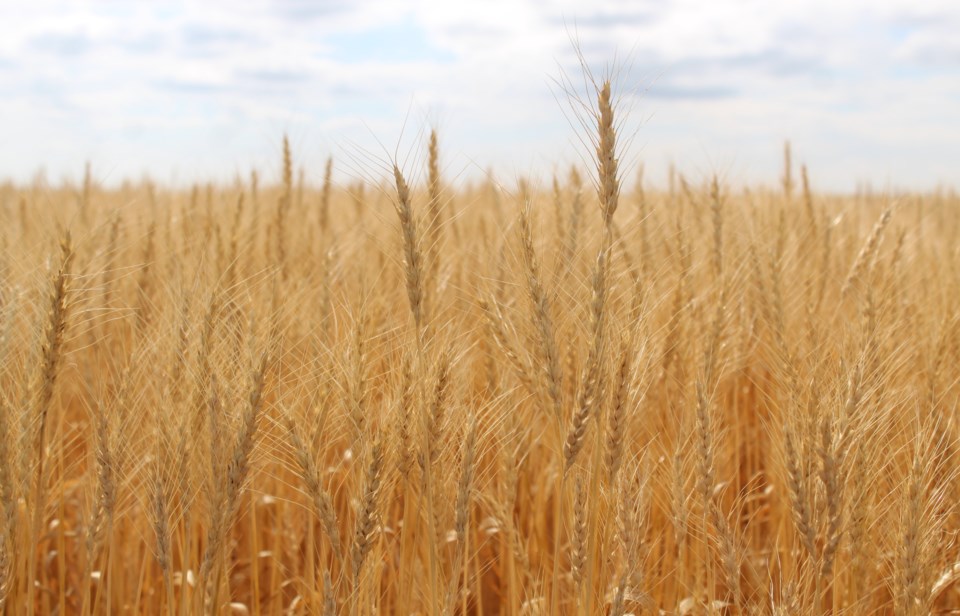It’s a sunny time for farmers in Alberta coming into 2023 as strong commodity prices, high-quality, high-value crops and good yields in 2022 have led to great profits.
That’s the opinion of Neil Blue, a provincial crop market analyst with Alberta Agriculture and Irrigation.
“We have had record –or near record –high crop income and profits in these last couple of years,” he confirmed to the Rocky View Weekly in a recent interview. “The pleasant surprise was a crop yield rebound from the drought-reduced yields of 2021.”
A second surprise was a fairly dry fall, which Blue noted allowed producers to finish their harvests in a timely manner, and also with good quality (crops).
“That good quality assists us in our marketing program for the year,” he said.
Wheat prices may be the biggest question mark coming into 2023, according to Blue, with record crops in Russia and Australia pushing down the markets this winter after near record highs earlier this year. Before the 2022 crop came in, said Blue, supply shortages from the 2021 drought and the war in Ukraine had led to inflated prices.
“Most crops hit record highs late winter (2021-2022) and into the spring,” he said. “That was mainly because of the concerns about dryness, but also the Russian invasion of Ukraine. For a while there, it shut down exports from both Ukraine and Russia, and it has since curtailed production and harvestability of crops in Ukraine.
“(However), Russia had a record crop of about 100 million tonnes this last year, so they have got a lot of wheat to export.”
That being said, Blue pointed out the weakness of the Canadian dollar relative to the U.S. dollar and the outstanding quality of Canadian crops this fall has allowed Canadian growers to continue to receive great returns despite the abundance of Russian and Australian wheat flooding the market this winter.
“Despite the drop in the U.S. Futures Markets, it seems like maybe our (high) quality is helping us out as well,” Blue said. “So we haven’t seen the Canadian wheat prices drop as much as they have in the U.S.”
According to Blue, another bright star for Alberta farmers this year has been, and continues to be, canola. This is driven mainly by the crush market for canola because of vegetable oil shortages, or inconsistent supply, in other parts of the world.
“The high prices for vegetable oil in general was supportive to our canola oil, and, in turn, to canola seed prices this last year,” Blue said. “COVID disruptions caused uneven demand for vegetable oils, but it certainly gave a push up to canola prices (in 2022). And that demand remains strong.
“Another factor that is an increasing influence on this vegetable oil market is the increasing demand for its use as bio-diesel. As Blue said, “that’s a continuing developing story.”
However, despite this strong price for canola, Blue said he doesn’t expect a huge uptick in seeded canola acres from Alberta farmers in 2023. It has nothing to do with price, said Blue, and everything to do with crop rotations facing increased disease risk.
“There is certainly the incentive to have more acres in canola this year; however, farmers are pushing their rotations about as far as they dare already,” he said. “A lot of rotations are just wheat, then canola, then wheat, then canola. That isn’t a great idea long term from a rotation point-of-view, with concerns of diseases in both those crops.”
That likely means many Alberta farmers will be looking to plant some type of alternative crop besides wheat or canola to safeguard their fields from disease.
Fortunately, Blue noted, farmers have a cornucopia of options coming into 2023 with higher prices in almost every crop option. Lentils will likely be a popular alternative rotation option this year, as well as potentially oats for cattle feed or human consumption, and probably feed barley and malt (brewing) barley. Blue said even peas this year might get a second look from some farmers, despite some possible disease implications there.
“The outlook for the crop sector is very good (in 2023),” he concluded.



